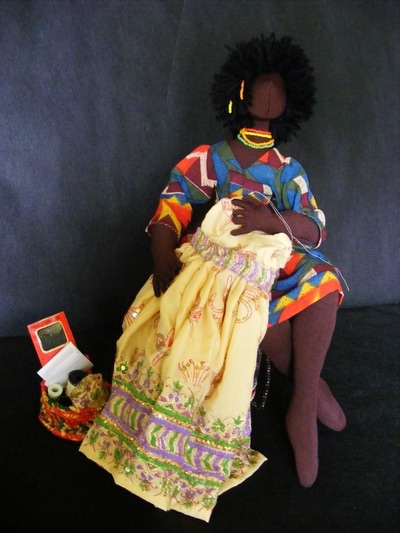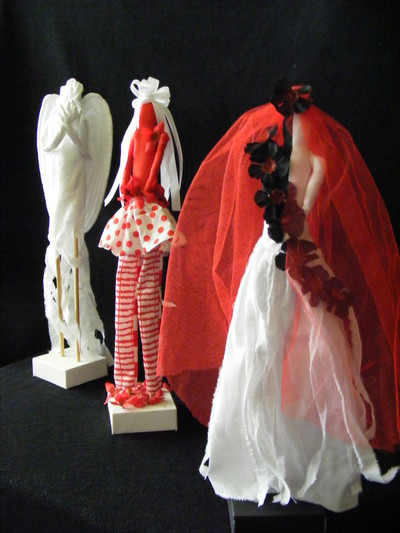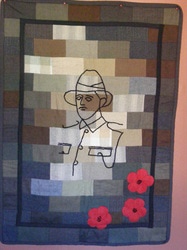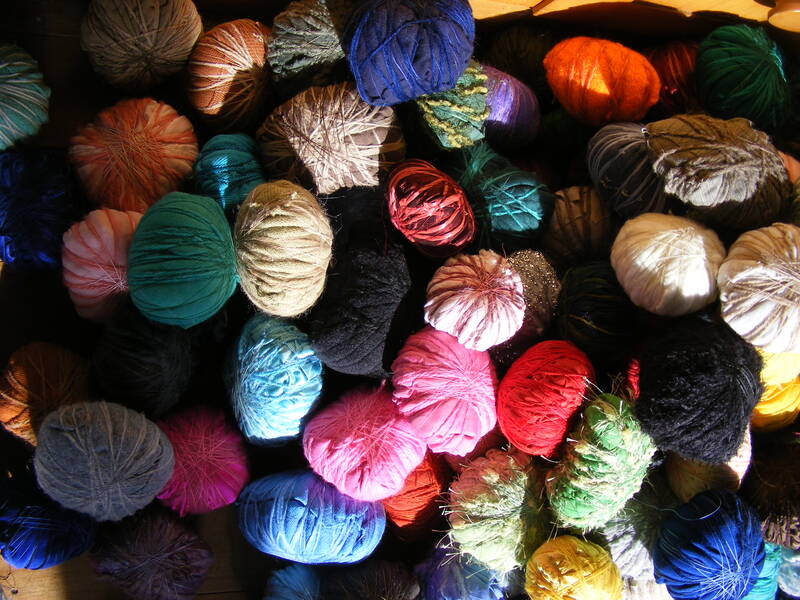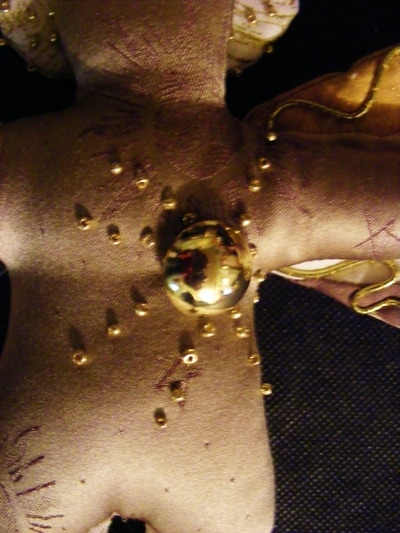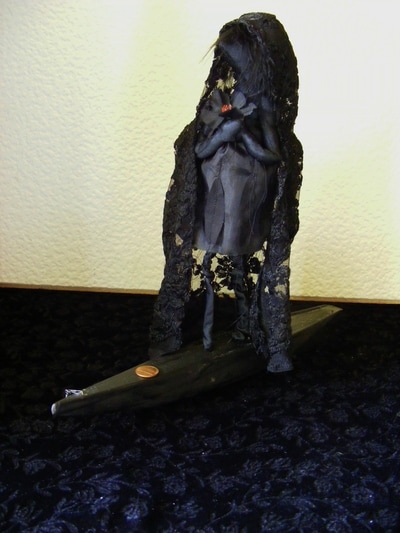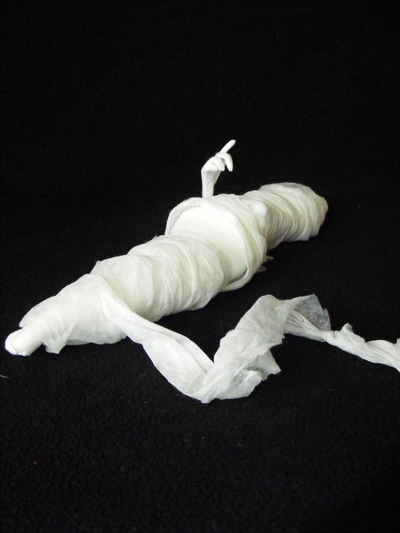HEARTFELT DOLLS
REFLECTING ON LIFE AND DEATH
Over the past few years,
I have been privileged to create 3 dolls which encapsulate the life of a living person,
and to create 3 "memento mori" dolls
which embody the essence of a loved one who has died.
I have been privileged to create 3 dolls which encapsulate the life of a living person,
and to create 3 "memento mori" dolls
which embody the essence of a loved one who has died.
The 'life' dolls demanded that I ponder upon the essence of a living person.
What captures the essence of a living human being?
Colour? Shape? Touch? Gesture? Story? Movement?
This is not just a practical activity -
it is about surrendering to mystery and allowing my subconscious to work
and co-operate with inspiration.
And as I muse upon the information I am given,
I wonder if these 'life' dolls are 'living eulogies' -
a tangible expression of LOVE as seen through the eyes of a loved one.
I hope they will help us to REMEMBER and give thanks.
What captures the essence of a living human being?
Colour? Shape? Touch? Gesture? Story? Movement?
This is not just a practical activity -
it is about surrendering to mystery and allowing my subconscious to work
and co-operate with inspiration.
And as I muse upon the information I am given,
I wonder if these 'life' dolls are 'living eulogies' -
a tangible expression of LOVE as seen through the eyes of a loved one.
I hope they will help us to REMEMBER and give thanks.
It is my practice to reuse and recycle and up-cycle materials.
This practice remembers and honours the craftsmanship
of those who contributed to the manufacture of these materials,
including growers, pickers (of cotton), millers, weavers, dyers,
felters, designers, transporters, retailers, and embellishers.
Re-purposing textiles also continues the story held within the fibres.
I do not disguise stains or tears or frays -
these reflect the story embedded in the textiles.
Just as the tragedies and losses and mistakes we make
as we journey through life cannot be expunged,
but instead contribute to our unique life story.
This practice remembers and honours the craftsmanship
of those who contributed to the manufacture of these materials,
including growers, pickers (of cotton), millers, weavers, dyers,
felters, designers, transporters, retailers, and embellishers.
Re-purposing textiles also continues the story held within the fibres.
I do not disguise stains or tears or frays -
these reflect the story embedded in the textiles.
Just as the tragedies and losses and mistakes we make
as we journey through life cannot be expunged,
but instead contribute to our unique life story.
I have created several dolls which I call "memory keepers".
They are a snapshot, a photo, a short video clip of a moment in a person's life, so to speak.
They are a tactile record of life's transitions.
They evoke a memory.
They are a snapshot, a photo, a short video clip of a moment in a person's life, so to speak.
They are a tactile record of life's transitions.
They evoke a memory.
But there is something different,
something deeply moving,
spiritual,
profound,
heartfelt,
about using the clothes and possessions,
the photos and memories of the dead,
to create a "memento mori".
"Memento mori" is a Latin phrase exhorting us to "remember that you have to die".
Traditionally, skulls were used in the art forms, as a symbolic form of our mortality.
Funerary art,
music and poetry, such as Danse Macabre by Camille Saint-Saens,
Victorian photography of the recently deceased,
literature, such as Elegy Written in a Country Churchyard by Thomas Gray,
Day of the Dead parades,
All Soul's Day and Lenten rituals and ceremonies,
clocks and watches,
jewellery using human hair,
Victorian bell jars as reliquaries,
relics which contain bodily remains or possessions of saints which are venerated,
all invite us to reflect on the lives of those we have loved and lost,
and with this reflection we are invited to become more fully alive.
These arts reflected the day-to-day experience of people living
before modern medicine and funeral practices.
Women washed and laid out the newly dead.
They lined caskets and wrapped the dead.
They created quilts on which the deceased was laid out,
or which were draped over the coffin.
In the Victorian era, the deceased (especially children)
were photographed so the family would have a picture.
Every day life reminded people that they were mortal.
Phillip George of UNSW Art and Design wrote,
” In the early 21st century,
we in the privileged global north rarely encounter death close up and personal
as an everyday part of our lives.
With all of our technological, surgical, pharmaceutical inventions and devices,
we expect, almost demand, to live a long life, live it in good health and look good doing it.
We live in denial that we will die."
I embrace the opportunity to be counter-cultural
and journey through my one and precious life
with death as my empowering companion.
something deeply moving,
spiritual,
profound,
heartfelt,
about using the clothes and possessions,
the photos and memories of the dead,
to create a "memento mori".
"Memento mori" is a Latin phrase exhorting us to "remember that you have to die".
Traditionally, skulls were used in the art forms, as a symbolic form of our mortality.
Funerary art,
music and poetry, such as Danse Macabre by Camille Saint-Saens,
Victorian photography of the recently deceased,
literature, such as Elegy Written in a Country Churchyard by Thomas Gray,
Day of the Dead parades,
All Soul's Day and Lenten rituals and ceremonies,
clocks and watches,
jewellery using human hair,
Victorian bell jars as reliquaries,
relics which contain bodily remains or possessions of saints which are venerated,
all invite us to reflect on the lives of those we have loved and lost,
and with this reflection we are invited to become more fully alive.
These arts reflected the day-to-day experience of people living
before modern medicine and funeral practices.
Women washed and laid out the newly dead.
They lined caskets and wrapped the dead.
They created quilts on which the deceased was laid out,
or which were draped over the coffin.
In the Victorian era, the deceased (especially children)
were photographed so the family would have a picture.
Every day life reminded people that they were mortal.
Phillip George of UNSW Art and Design wrote,
” In the early 21st century,
we in the privileged global north rarely encounter death close up and personal
as an everyday part of our lives.
With all of our technological, surgical, pharmaceutical inventions and devices,
we expect, almost demand, to live a long life, live it in good health and look good doing it.
We live in denial that we will die."
I embrace the opportunity to be counter-cultural
and journey through my one and precious life
with death as my empowering companion.
It is not a new idea to use art and craft to memorialise the dead.
Each generation has found new and innovative ways
to reflect on our mortality,
to honour the dead,
and to enrich, empower and enervate the lives of the living.
We cannot live a full and conscious life if we do not accept we will die,
that those we know will die, and
that acts of violence and natural disaster will destroy life as we know it.
The red poppy has become a symbol of war remembrance the world over.
ANZAC Poppies crafted from enamel, fabric, paper,
crocheted, folded, stitched, and pinned on with pride,
help us confront death and mortality,
and integrate it into our own lives.
Sherri Lynn Wood of Passage Quilts says
“Passage Quilts are functional improvisational quilts made from the clothing of the deceased
and the intimate materials of every day life.
They are made as a bereavement process,
to mark life transitions,
commemorate relationships,
and to celebrate community.”
Heather Germann of Tirau, New Zealand, makes Nostalgia Bears.
She says,
"We specialise in making bears from recycled materials.
Send us a piece of clothing from a loved one who has passed away
and we will make a nostalgia bear from it.
Anything from denim jeans, old jackets and coats to granny's old real fur coat."
Each generation has found new and innovative ways
to reflect on our mortality,
to honour the dead,
and to enrich, empower and enervate the lives of the living.
We cannot live a full and conscious life if we do not accept we will die,
that those we know will die, and
that acts of violence and natural disaster will destroy life as we know it.
The red poppy has become a symbol of war remembrance the world over.
ANZAC Poppies crafted from enamel, fabric, paper,
crocheted, folded, stitched, and pinned on with pride,
help us confront death and mortality,
and integrate it into our own lives.
Sherri Lynn Wood of Passage Quilts says
“Passage Quilts are functional improvisational quilts made from the clothing of the deceased
and the intimate materials of every day life.
They are made as a bereavement process,
to mark life transitions,
commemorate relationships,
and to celebrate community.”
Heather Germann of Tirau, New Zealand, makes Nostalgia Bears.
She says,
"We specialise in making bears from recycled materials.
Send us a piece of clothing from a loved one who has passed away
and we will make a nostalgia bear from it.
Anything from denim jeans, old jackets and coats to granny's old real fur coat."
What is the role of art in my contemplation of life and death?
I agree with Damien Hirst when he says,
"I've got an obsession with death.
But I think its like a celebration of life rather than something morbid."
He demands that I confront the relationship between my life and my death.
Am I afraid to live and to die?
Do I see life and death as polar opposites
or simply moments on a continuum?
How does my living reflect my beliefs about my dying?
Photographer Jennifer Loeber
"...turned to the things her mother left behind,
formerly banal objects transformed into tangible evidence of her mom’s existence,
as artistic inspiration.
The resulting images are thoughtful odes to her mother’s memory ..."
This artist explores questions I have like
How do we make people present?
How do we embody their spirit?
Where is the line between healthy remembrance and unhealthy obsession?
"A bling funeral is a celebration of presence."
says photographer Ebony G. Patterson.
Once again, this artist invites me to consider
Is death something to be feared?
Does the mourning process have to be filled with sorrow?
I agree with Damien Hirst when he says,
"I've got an obsession with death.
But I think its like a celebration of life rather than something morbid."
He demands that I confront the relationship between my life and my death.
Am I afraid to live and to die?
Do I see life and death as polar opposites
or simply moments on a continuum?
How does my living reflect my beliefs about my dying?
Photographer Jennifer Loeber
"...turned to the things her mother left behind,
formerly banal objects transformed into tangible evidence of her mom’s existence,
as artistic inspiration.
The resulting images are thoughtful odes to her mother’s memory ..."
This artist explores questions I have like
How do we make people present?
How do we embody their spirit?
Where is the line between healthy remembrance and unhealthy obsession?
"A bling funeral is a celebration of presence."
says photographer Ebony G. Patterson.
Once again, this artist invites me to consider
Is death something to be feared?
Does the mourning process have to be filled with sorrow?
I have often used textile art to explore life and death.
200 knitted breast prosthetics.
Formed into a 3 circuit labyrinth.
As visitors walked it,
they were invited to reflect on those living and dying with breast cancer.
They were invited into a dialogue between life and death.
200 wrapped rocks.
At the centre of each is a stone, representing our essence - elusive, inspirational, unique.
There are 5 layers around each core -
for 5 aspects of our self -
intellectual, physical, sexual, spiritual, emotional.
Yarn and thread are wrapped around all these -
the things which hold us together and give shape to our lives.
An invitation to engage with our concepts of self,
and those aspects of self which endure through death.
28 wrapped beads.
A daily meditation on my living and dying.
Our daily medicine.
The medicine we need to live a fully engaged life.
200 knitted breast prosthetics.
Formed into a 3 circuit labyrinth.
As visitors walked it,
they were invited to reflect on those living and dying with breast cancer.
They were invited into a dialogue between life and death.
200 wrapped rocks.
At the centre of each is a stone, representing our essence - elusive, inspirational, unique.
There are 5 layers around each core -
for 5 aspects of our self -
intellectual, physical, sexual, spiritual, emotional.
Yarn and thread are wrapped around all these -
the things which hold us together and give shape to our lives.
An invitation to engage with our concepts of self,
and those aspects of self which endure through death.
28 wrapped beads.
A daily meditation on my living and dying.
Our daily medicine.
The medicine we need to live a fully engaged life.
I am enchanted by "Memento Mori" by Billy Collins
There is no need for me to keep a skull on my desk,
to stand with one foot up on the ruins of Rome,
or wear a locket with the sliver of a saint's bone.
It is enough to realise that every common object
in this sunny little room will outlive me -
the carpet, radio, bookstand and rocker.
Not one of these things will attend my burial,
not even this dented goosenecked lamp
with its steady benediction of light,
though I could put worse things in my mind
than the image of it waddling across the cemetery
like an old servant, dragging the tail of its cord,
the small circle of mourners parting to make room.
There is no need for me to keep a skull on my desk,
to stand with one foot up on the ruins of Rome,
or wear a locket with the sliver of a saint's bone.
It is enough to realise that every common object
in this sunny little room will outlive me -
the carpet, radio, bookstand and rocker.
Not one of these things will attend my burial,
not even this dented goosenecked lamp
with its steady benediction of light,
though I could put worse things in my mind
than the image of it waddling across the cemetery
like an old servant, dragging the tail of its cord,
the small circle of mourners parting to make room.
I wonder if I am misinterpreting the term 'memento mori'.
Perhaps it is more about DEATH than about those who have died.
Or is it an emphatic call to LIVE our one and precious life fully.
Can the two be considered separately?
Could it be that when we are bereaved,
when we mourn and grieve for one who has died,
we live the paradox,
we are healed and transformed by the paradox:
that is by coming face-to-face with our mortality we become fully alive.
postscript
If you want to listen to sublime music that shares an intimate acceptance of death,
listen to "You Want It Darker" by Leonard Cohen.
Perhaps it is more about DEATH than about those who have died.
Or is it an emphatic call to LIVE our one and precious life fully.
Can the two be considered separately?
Could it be that when we are bereaved,
when we mourn and grieve for one who has died,
we live the paradox,
we are healed and transformed by the paradox:
that is by coming face-to-face with our mortality we become fully alive.
postscript
If you want to listen to sublime music that shares an intimate acceptance of death,
listen to "You Want It Darker" by Leonard Cohen.





